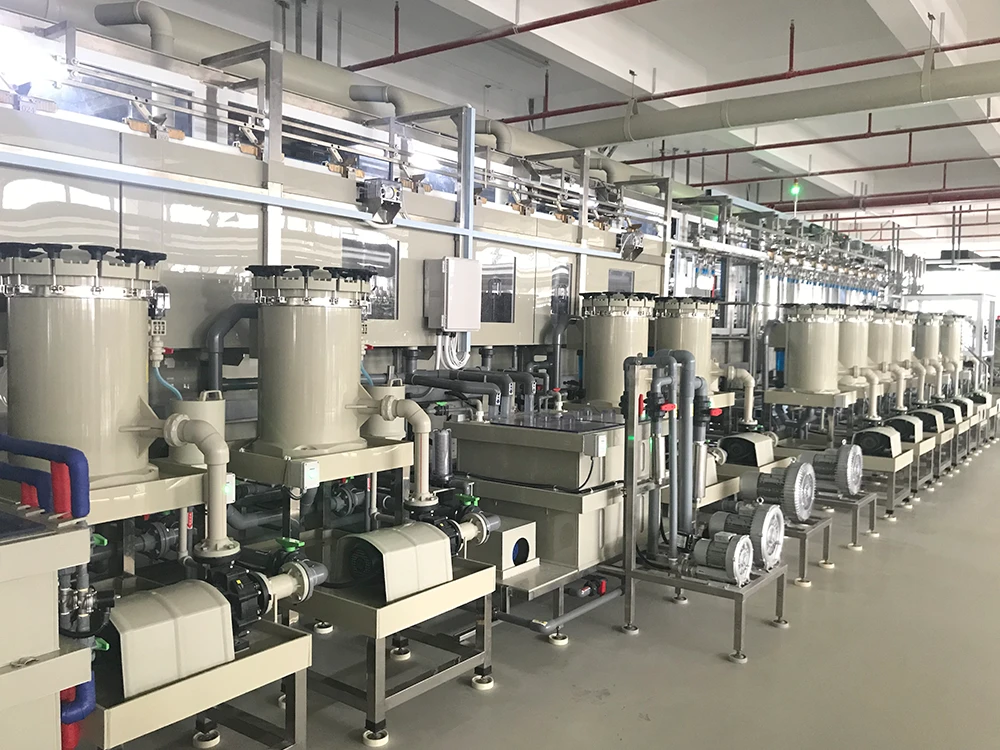
# Electroplating Filter: Enhancing Efficiency and Purity in Metal Deposition Processes
Electroplating is a widely used process in various industries, from electronics to automotive manufacturing. It involves depositing a thin layer of metal onto a substrate to enhance its properties, such as corrosion resistance, conductivity, or aesthetic appeal. However, the efficiency and quality of electroplating heavily depend on the purity of the plating solution. This is where the electroplating filter comes into play, ensuring that the process runs smoothly and produces high-quality results.
## The Role of Electroplating Filters
Electroplating filters are essential components in the metal deposition process. Their primary function is to remove impurities, such as particulate matter, oils, and other contaminants, from the plating solution. These impurities can negatively affect the plating process, leading to defects like pitting, roughness, or uneven coating. By maintaining a clean and contaminant-free solution, electroplating filters help achieve a uniform and high-quality metal deposition.
### Types of Electroplating Filters
There are several types of electroplating filters available, each designed to address specific filtration needs:
– **Cartridge Filters**: These are disposable filters that capture particles as the plating solution passes through them. They are easy to replace and are suitable for applications requiring high purity.
– **Bag Filters**: Made from durable materials, bag filters are ideal for removing larger particles and are often used in pre-filtration stages.
– **Depth Filters**: These filters use a thick filtration medium to trap particles throughout their depth, making them effective for removing fine contaminants.
– **Membrane Filters**: Known for their precision, membrane filters can remove even the smallest particles, ensuring the highest level of purity in the plating solution.
## Benefits of Using Electroplating Filters
Incorporating electroplating filters into the metal deposition process offers several advantages:
– **Improved Plating Quality**: By removing contaminants, filters ensure a smooth and even metal coating, reducing defects and enhancing the overall quality of the plated product.
– **Extended Bath Life**: Clean plating solutions last longer, reducing the frequency of bath replacements and lowering operational costs.
– **Increased Efficiency**: Filters help maintain consistent plating conditions, leading to faster and more efficient production processes.
– **Environmental Benefits**: By reducing waste and the need for frequent solution changes, filters contribute to more sustainable manufacturing practices.
### Maintenance and Best Practices
To maximize the effectiveness of electroplating filters, regular maintenance is crucial. This includes:
– **Routine Inspections**: Regularly check filters for signs of clogging or damage and replace them as needed.
– **Proper Sizing**: Ensure that the filter size and type are appropriate for the specific plating application to achieve optimal filtration.
– **Cleaning Procedures**: Follow manufacturer guidelines for cleaning and maintaining filters to prolong their lifespan and maintain performance.
## Conclusion
Electroplating filters play a vital role in enhancing the efficiency and purity of metal deposition processes. By removing contaminants and maintaining clean plating solutions, they ensure high-quality results, extended bath life, and more sustainable manufacturing practices. Whether you’re in the electronics, automotive, or any other industry that relies on electroplating, investing in the right filtration system can significantly improve your production outcomes.
Keyword: electroplating filter
